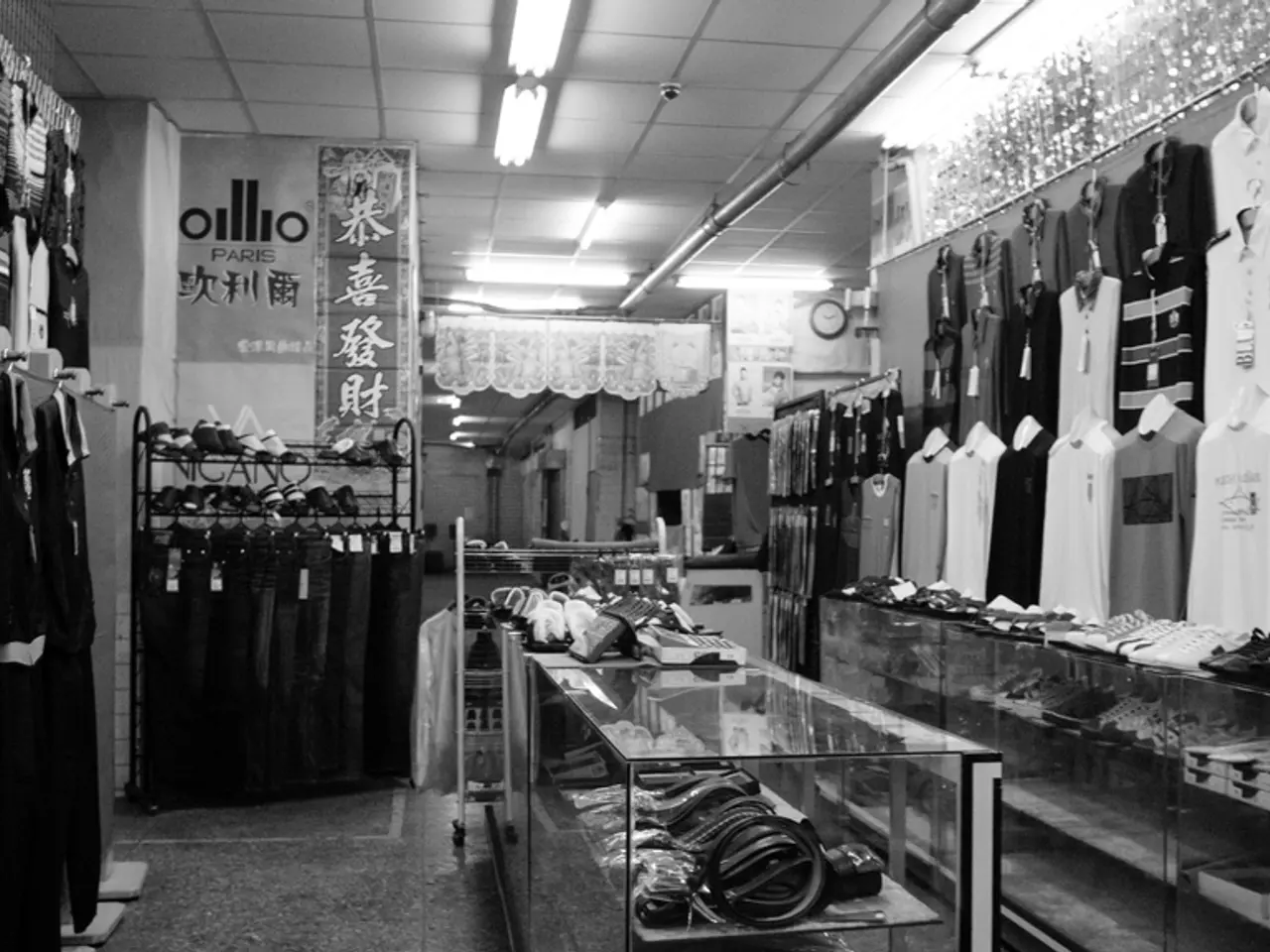International Fashion Companies Conquer the Billion-Dollar Indian Fashion Industry
In the vibrant and ever-evolving world of fashion, India stands out as a unique and dynamic market. As the sixth-largest fashion market globally, it has attracted numerous international labels seeking to make a lasting mark in this expanding industry.
Luxury fashion labels, such as Burberry, Canali, Paul Smith, Corneliani, and Bottega Veneta, have recognised the allure of traditional Indian designs, like the bandhgala, and have collaborated with local designers to capture the Indian sensibility and resonate with consumers. These collaborations, like the 'Nawab Collection' by Canali, Indo-Western melee collections by Paul Smith and Corneliani, and the 'Knot India' clutch by Bottega Veneta, are examples of a fusion of Indian and foreign elements.
Fashion design in India has had varied connotations and purposes, often going beyond just a style statement. It is deeply intertwined with cultural dynamics, local brand loyalty, and region-specific consumer tastes. Brands, labels, and the concept of luxury are closely correlated with status in India, making it essential for international brands to understand and adapt to these nuances.
Companies like Uniqlo offer affordable, casual, and sustainable western wear, focusing on creating lasting, durable, and high-quality products that steer clear of disposable apparels. This caters to the growing demand among India's youth for affordable, casual, and sustainable fashion trends from across the world.
Despite the challenges posed by the pandemic, the future of fashion both within India and globally looks promising. The strategies that have worked well in the past, such as understanding local preferences and adapting products to meet cultural and consumer needs, will serve as a starting point for new labels and international brands entering the market.
India's middle class demographic has increased significantly, and a report by McKinsey predicts a 1.4% growth of India's middle class population in 2021. This growing middle class prioritises goods that offer the right value for money, making it crucial for brands to focus on affordability without compromising on quality.
As India evolves to become the third-largest economy in Asia, the Indian fashion market demands a fluid and dynamic industry to cater to its diversity and complexity. International brands have had to strike the perfect balance between capturing the Indian essence and bringing something new to the table. This balance is key to success in the Indian fashion market, where consumers seek a fusion of formal and casual, luxurious and hand-me-downs.
In conclusion, the Indian fashion market is a fascinating space, filled with opportunities for both local and international brands. As the industry continues to grow and evolve, it will be interesting to see how brands navigate this complex landscape and continue to cater to the unique tastes and preferences of Indian consumers.







